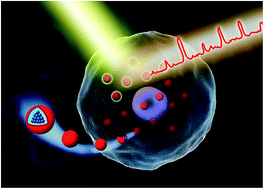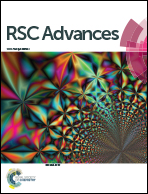Identification and distinction of non-small-cell lung cancer cells by intracellular SERS nanoprobes†
Abstract
Non-small-cell lung cancer (NSCLC) comprises ∼75% of all lung cancer and consists of several subtypes. Identification of lung cancer cell subtypes is important for choosing the appropriate therapy plan and reducing mortality. In this study, we have been able to identify and distinguish three subtypes of NSCLC cells (H1229, H460 and A549) and leukocytes on the single-cell level by combining surface-enhanced Raman scattering (SERS) spectroscopy and multivariate statistical methods. After the evaluation of three statistical methods, support vector machines (SVM) shows the best classification performance compared to hierarchical cluster analysis (HCA) and principal component analysis (PCA) methods based on a large amount of cell SERS spectra from Au nanoshells as intracellular nanoprobes. The SVM classification model provides a prediction accuracy of 88.75% for “unknown” independent cell types and an accuracy of ∼95% for the two subtypes mixed samples on a single-cell level. This method combining SERS and SVM could potentially be adapted to the distinction of other types of cancer cells and be applied for conducting non-invasive downstream cell identification after the capture of circulating tumor cells.


 Please wait while we load your content...
Please wait while we load your content...